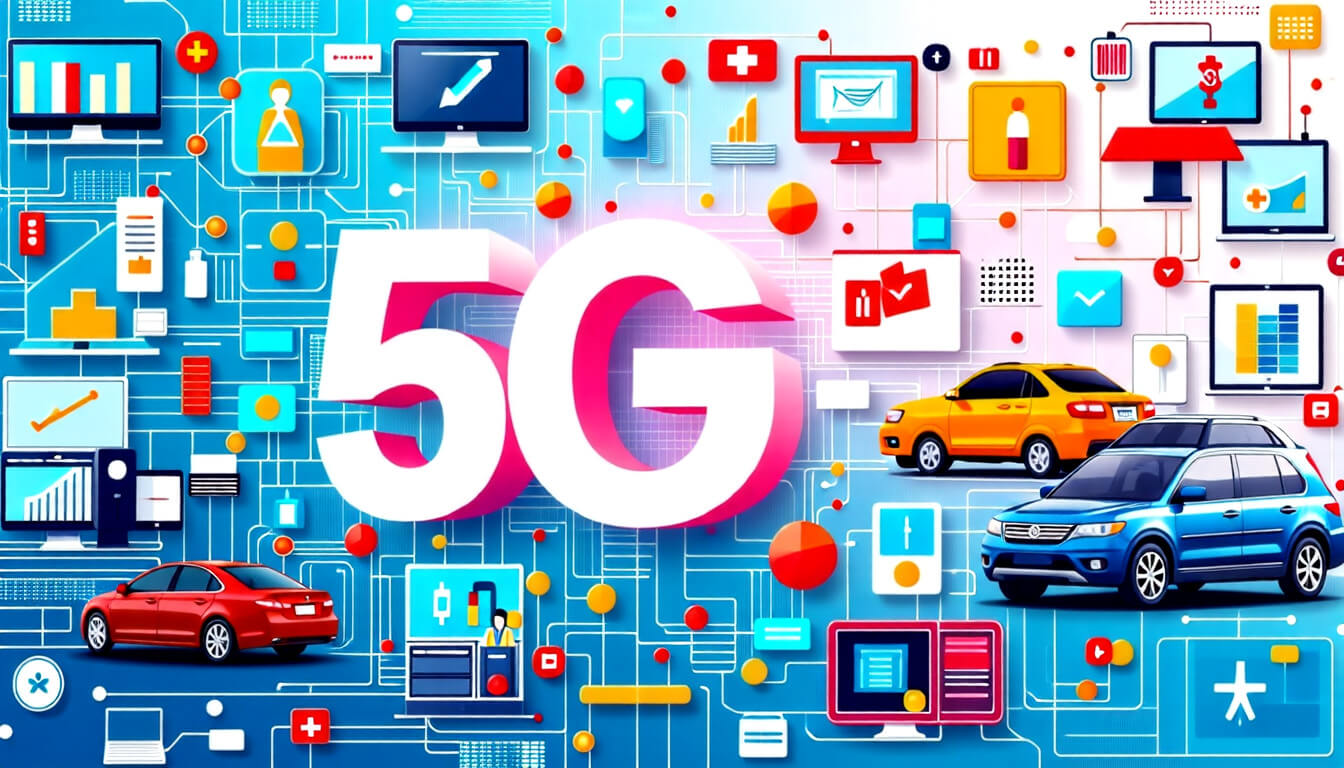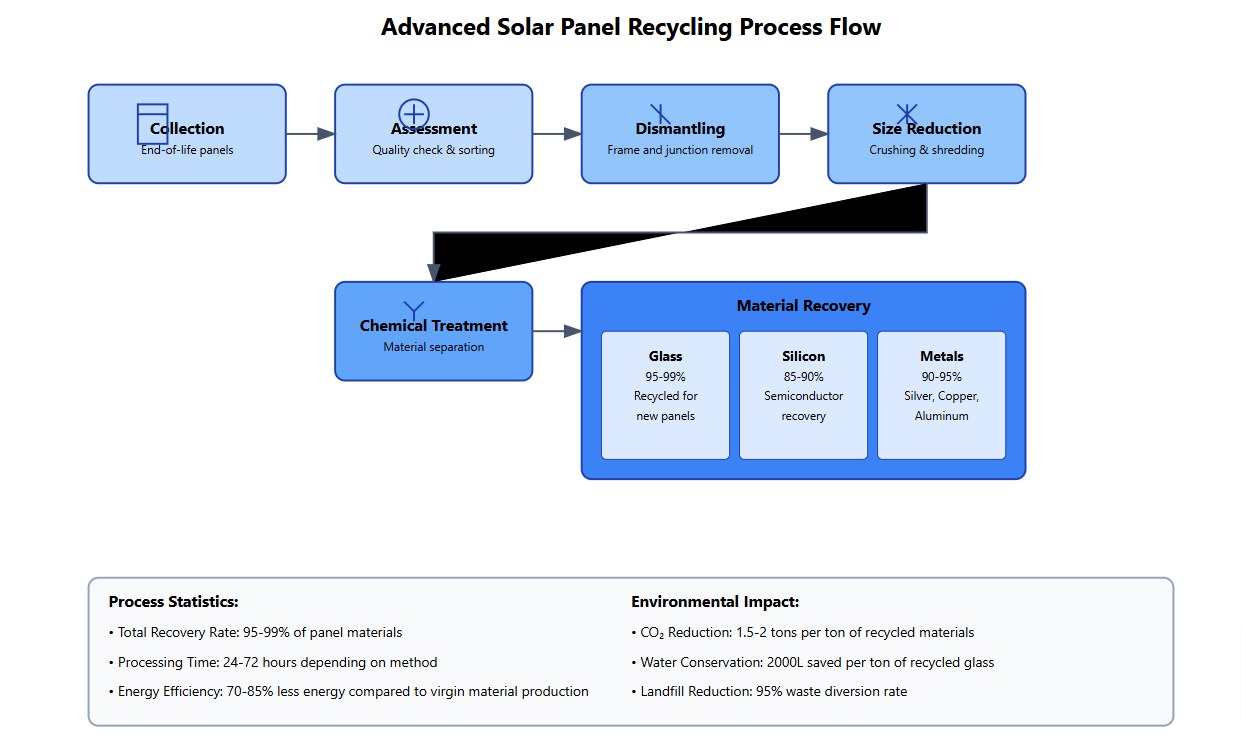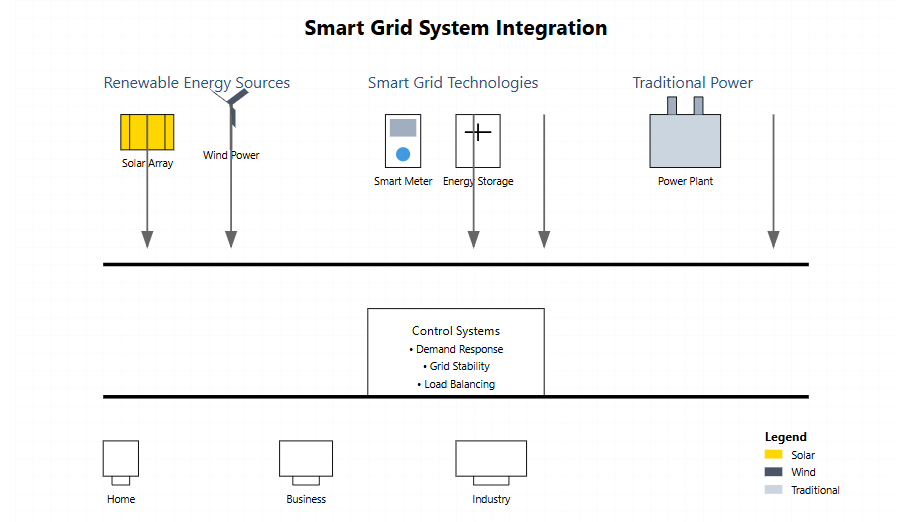The modernization of our power grid stands as one of the most critical infrastructure challenges of the 21st century. As we navigate the transition to renewable energy sources and face increasing demands for reliability and resilience, understanding the technology roadmap for grid modernization becomes essential for utility professionals and energy stakeholders.
Introduction: The Grid at a Crossroads
Our current power grid, often described as the largest machine ever built, faces unprecedented challenges. With the rapid integration of renewable energy sources, increasing extreme weather events, and rising cybersecurity threats, the traditional grid architecture is reaching its operational limits.
According to the U.S. Department of Energy’s Grid Modernization Initiative, over 70% of power transmission lines and transformers are over 25 years old, making grid modernization not just desirable but imperative.
Key Statistics:
- $2.5 trillion: Estimated global investment needed in grid modernization by 2030
- 64%: Increase in weather-related power outages since 2011
- 300%: Growth in distributed energy resources expected by 2025
Understanding Grid Modernization: Beyond Smart Grids
Grid modernization encompasses more than just digitalization. It represents a fundamental shift in how we generate, transmit, and consume electricity.

What Drives Grid Modernization?
- Renewable Integration: The need to handle variable generation from wind and solar
- Resilience Requirements: Increasing grid reliability against cyber and physical threats
- Consumer Engagement: Growing demand for energy choice and control
Essential Technologies Transforming the Grid
The modernization of our power infrastructure relies on several interconnected technologies. Understanding how these technologies work together creates the foundation for successful implementation.
How Does Advanced Metering Infrastructure (AMI) Transform Operations?
Advanced Metering Infrastructure represents far more than simple smart meters. Modern AMI systems create a two-way communication network between utilities and consumers, enabling real-time data exchange and dynamic grid management.
According to a recent National Renewable Energy Laboratory study, utilities with comprehensive AMI deployment report:
- 30% reduction in outage detection time
- 45% improvement in peak load management
- 25% decrease in operational costs

What Role Do Distributed Energy Resource Management Systems Play?
DERMS technology has emerged as the crucial link between growing distributed energy resources (DERs) and traditional grid operations. These sophisticated software platforms optimize the integration and management of diverse energy sources.
Why Are Grid-Scale Energy Storage Solutions Critical?
Energy storage systems serve as the backbone of grid modernization, providing essential services including:
- Frequency Regulation: Maintaining grid stability during rapid changes in supply or demand
- Peak Shaving: Reducing strain during high-demand periods
- Renewable Integration: Smoothing intermittent generation from solar and wind

How Do Smart Inverters Enable Grid Flexibility?
Smart inverters represent a quantum leap beyond traditional power electronics. These devices provide sophisticated grid support functions, including:
- Voltage regulation and reactive power support
- Low-voltage ride-through capabilities
- Autonomous grid stability features
Implementation Roadmap: From Planning to Execution
Successful grid modernization requires a structured approach that balances technical requirements with organizational capabilities. The following roadmap provides a framework for utilities and stakeholders.
Phase 1: Assessment and Planning
- Grid Assessment: Evaluate current infrastructure capabilities and limitations
- Needs Analysis: Identify critical modernization requirements
- Stakeholder Engagement: Build consensus among key decision-makers
- Technology Selection: Choose appropriate solutions based on assessment results

What Are the Key Integration Challenges?
Utilities implementing grid modernization technologies face several critical challenges:
Common Integration Hurdles:
- Legacy System Integration: Connecting new technologies with existing infrastructure
- Data Management: Handling increased volumes of operational data
- Cybersecurity: Protecting expanded digital infrastructure
- Workforce Development: Training staff on new technologies
According to the Electric Power Research Institute, successful integration requires a comprehensive change management strategy that addresses both technical and organizational aspects.
Future Outlook and Strategic Recommendations
The future of grid modernization will be shaped by emerging technologies and evolving grid requirements. Utility leaders should consider several key strategies when planning their modernization initiatives.
Strategic Recommendations
- Adopt a Platform Approach: Implement flexible, scalable solutions that can accommodate future technologies
- Prioritize Interoperability: Ensure new systems can communicate effectively with both legacy and future components
- Focus on Resilience: Design modernization projects with built-in redundancy and recovery capabilities
- Embrace Data Analytics: Invest in advanced analytics capabilities to maximize the value of grid data
Measuring Success: Key Performance Indicators
Utilities should track several metrics to evaluate their modernization efforts:
- Reliability Indices: SAIDI, SAIFI, and CAIDI improvements
- DER Integration: Percentage of successfully integrated distributed resources
- Operational Efficiency: Reduction in operational costs and manual interventions
- Customer Satisfaction: Improved service quality and engagement metrics
Moving Forward with Grid Modernization
Grid modernization represents a fundamental transformation of our energy infrastructure. Success requires careful planning, strategic technology selection, and comprehensive implementation strategies. By following the roadmap outlined in this guide and staying informed about emerging technologies, utilities can build a grid that meets both current needs and future challenges.
Take Action:
- Begin with a comprehensive grid assessment
- Develop a phased implementation plan
- Engage stakeholders early and often
- Focus on building internal capabilities
- Monitor and measure progress against clear metrics










